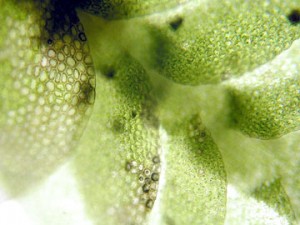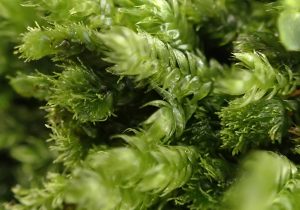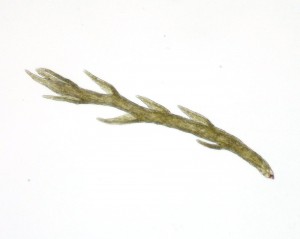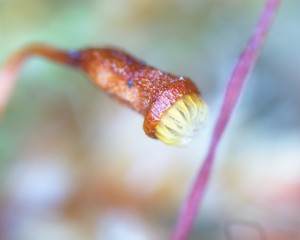Habitat
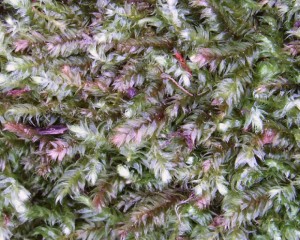 Pseudotaxiphyllum elegans prefers shadier areas of forest soil banks, humus, rotten logs, rocks, tree trunk bases, along disturbed trails on compacted and bare soil patches.
Pseudotaxiphyllum elegans prefers shadier areas of forest soil banks, humus, rotten logs, rocks, tree trunk bases, along disturbed trails on compacted and bare soil patches.
Gametophyte
Overall Structure:
 Pseudotaxiphyllum elegans is a pleurocarpous moss with shiny, irregularly-branched, flattened shoots that creep over the substratum.
Pseudotaxiphyllum elegans is a pleurocarpous moss with shiny, irregularly-branched, flattened shoots that creep over the substratum.
The flattening of the shoots makes the leaves appear as if they are arranged in 2 rows along the stems.
Leaf Structure:
 Leaves are lanceolate and have a weak double costa. Small teeth are usually present along the upper margins.
Leaves are lanceolate and have a weak double costa. Small teeth are usually present along the upper margins.
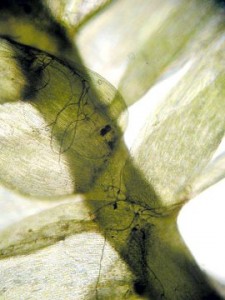 The root “taxiphyllum” is a reference to the apparent arrangement of the leaves in two rows. A look at higher magnification reveals that the leaves are in fact spirally arranged on the stem.
The root “taxiphyllum” is a reference to the apparent arrangement of the leaves in two rows. A look at higher magnification reveals that the leaves are in fact spirally arranged on the stem.
It is most likely due to this intitial impression of the leaves being in two ranks along the stem that Pseudotaxiphyllum elegans is occasionally mistaken for a liverwort. For comparison, here is a closeup of a leafy liverwort shoot.
Asexual Reproduction
In winter, this species produces asexual propagules in the leaf axils near the tips of shoots.
Flagelliferous branches, in clusters from axils of leaves, are tiny, brittle, yellow-green branchlets that break away and grow into new plants.
Sporophyte
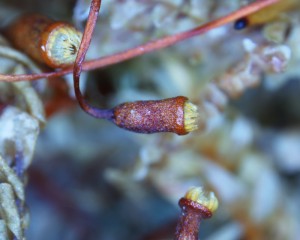 The sporophytes are not common and mature in spring.
The sporophytes are not common and mature in spring.
Sporangium:
The sporangium is nodding and red-brown at maturity.


